ALISON THIRION


According to her collections, she kneads the clay like references to the past. Music, literature or architecture: the arts are everywhere. They infuse her work and inscribe her pieces in a relative timelessness. Let’s meet in the heart of her workshop in the Paris region, where the head thinks, the hand transforms, the clay cooks and the chemistry works.
E-O Alison, could you tell us about your career? How did clay and volume come into your life?
A-T Although my initial training was far from arts and crafts (editor’s note: she worked as an advertising executive for several years), I have always cultivated a creative universe punctuated by experimentation, photography, painting… with drawing as a common thread. It was during a plastic expression class, where we were working on form and abstraction, that I felt like experimenting with volume. At that time I was going in circles in my artistic practice, I felt the need to evolve in a different way towards form and clay appeared as an obvious choice. After some leisure classes, my decision was made, ceramics took all the space, I could only think of it! So I started a reconversion with Grégoire Scalabre who trained me in throwing, and who remains my reference today. Drawing is still there, but in a different form!
What is your relationship with your workshop? How does it influence the way you work?
When I started ceramics, I left Paris and moved to a small village 50km from Paris, in the heart of the Rambouillet forest. I am surrounded by nature so it is very peaceful and perfect to concentrate. At the beginning, my studio was in a small corner of the house but I finally invested the whole living room to work… That’s how influential it was! I would sometimes get up at night to untwist or at dawn to shoot. I no longer count the days and weeks that never ended! Today things are organised differently. I still feel at home there, even if we are separated by several kilometres. I have my habits, my landmarks, it’s my refuge. It’s where everything starts. The studio evolves with me, I often move things around so that it is always the most adapted to my needs.
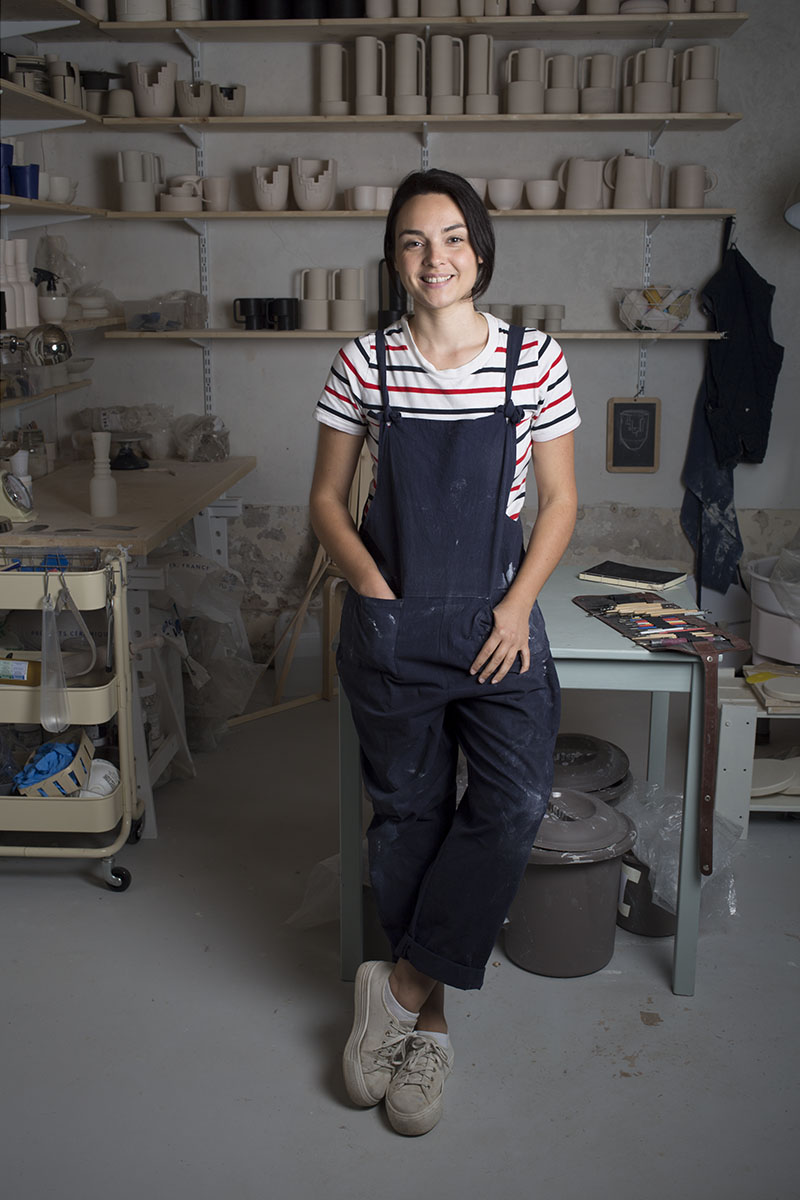
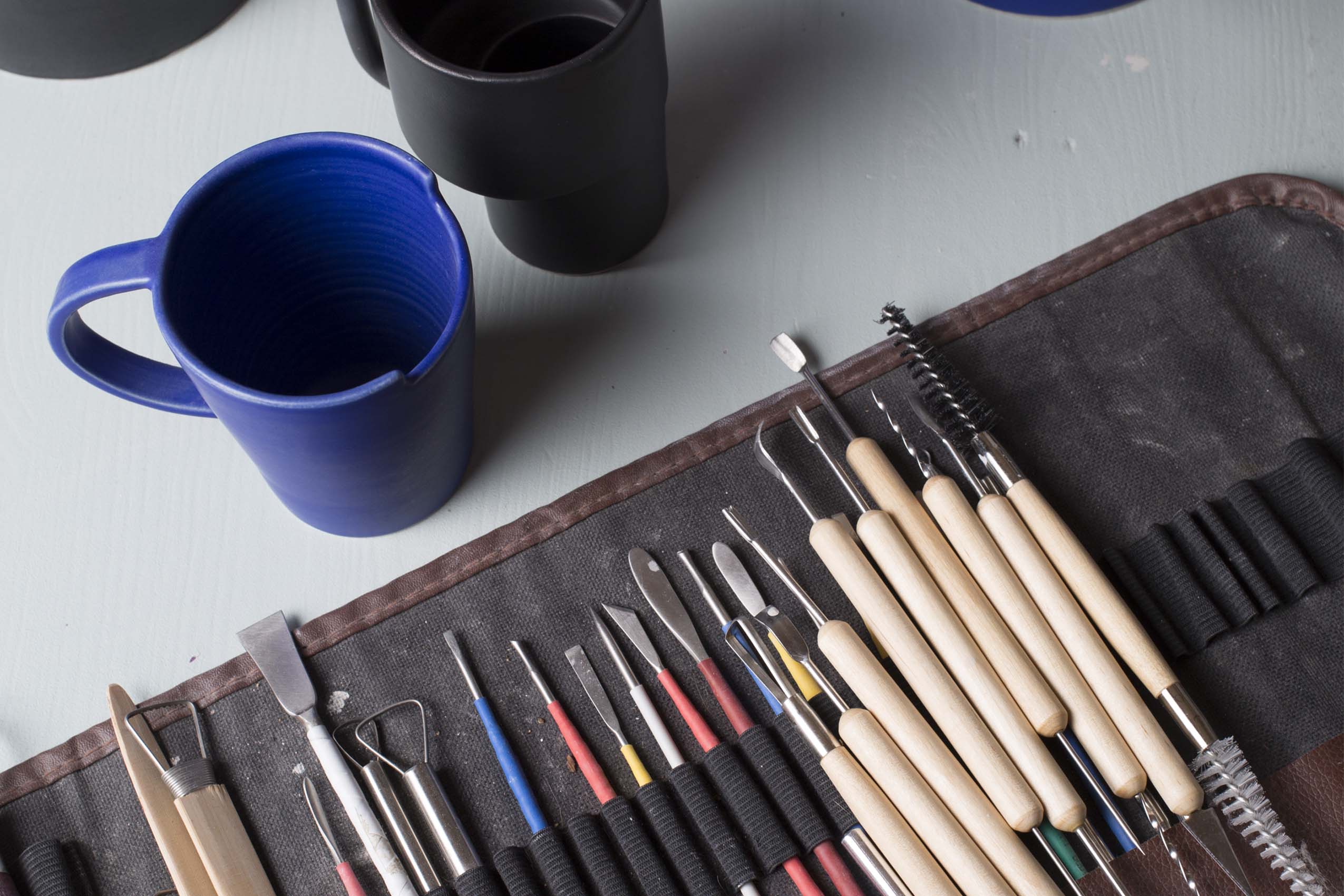
Your creations seem to be situated between tradition and contemporaneity. What do you want to convey through them? A certain idea of timelessness?
Above all, I try to make singular, balanced, offbeat objects that seem to have always been around, but at the same time that nobody has ever made. I like my ceramics to be pure in form and to keep the vibrancy of the handmade. My rather limited knowledge of ceramics (I’ve caught up a bit since then!) has allowed me to be very free in my creation. I took the time to make personal things, which resemble me. I therefore try to convey through them the demands of the material, its strength and fragility, but also the plurality it allows and its timelessness indeed…
All your pieces are produced in small series, and obviously by hand: a technical constraint or a real conviction?
I learned to turn because I wanted to make, produce, touch. I need this contact with the material and I spend a lot of time making my pieces. And then I like the uniqueness that it gives them. In any case, I have a small workshop and a small kiln, which do not allow me to produce a lot of pieces… for the moment anyway!
Through the “Cocteau” or “La Muralla Roja” collections, we can feel the importance of the past and its imprint, the desire to transmit or perpetuate a cultural heritage. What is your relationship with history?
I work a lot before the creation of a piece. Drawing, architecture and all forms of art are inexhaustible sources of inspiration. I love ceramics, of course, but in the end it is not this discipline that inspires my pieces the most. I often detach myself from it to draw inspiration from elsewhere. These two collections are linked to my personal history. I have been drawing since I was a child and Cocteau is an artist whose boldness and plurality I admire. His approach to fullness and emptiness, the symmetry of his bodies and the poetry of his line combine perfectly with porcelain. As for the Muralla Roja, it is a nod to my interest in architecture and my Spanish origins. More than a vase or a cup, my pieces are a part of me, of my personality that I transmit through them.


With your Muralla collection, you are moving away from monochrome for the first time and introducing colour into your work. How did you feel about this chromatic audacity?
I must admit that colour scares me as much as it fascinates me. It is powerful, complex and in my opinion must bring something to the piece. If it’s just decorative, I’m not really interested. I prefer the natural colour of the earth, which is often perfect. Here the blue refers to the Mediterranean, the shades of light and shadow of the Muralla Roja, the sky. Sometimes there is a nod to Majorelle or Greece, why not! I like everyone to make the story their own.
How did you choose to translate the constructivist aesthetic of this post-modernist masterpiece into this collection?
I wanted the object to be inspired by and use the codes of Ricardo Bofill’s architecture, without simply reproducing it. The numerous staircases are found in the cut-outs of the rooms, and the installation of cubes allows us to find the lines. The photo and the staging of my pieces are an integral part of the object. It helps me to convey their history and to integrate them into a world.
What does the city mean to you?
The city inspires me, especially its architecture. I like to borrow details from it. I’m more comfortable with the idea of taking on a subject that has already been used by man; art and architecture, for example, are themes that feed my work. Nature, on the other hand, is so perfect that it has something sacred about it. I don’t dare to venture into it.
How important is the contact with the material for you?
When I go from drawing to clay, I need all my senses. It starts with the kneading of the clay, its humidity, its firmness, its smell, its colour… It’s an experience every time. I couldn’t do without it. I have complex pieces to make. Unconsciously I think that I extend the moment of contact with the material, the shaping during which I cut, scrape, polish the raw clay. This is my favourite moment.
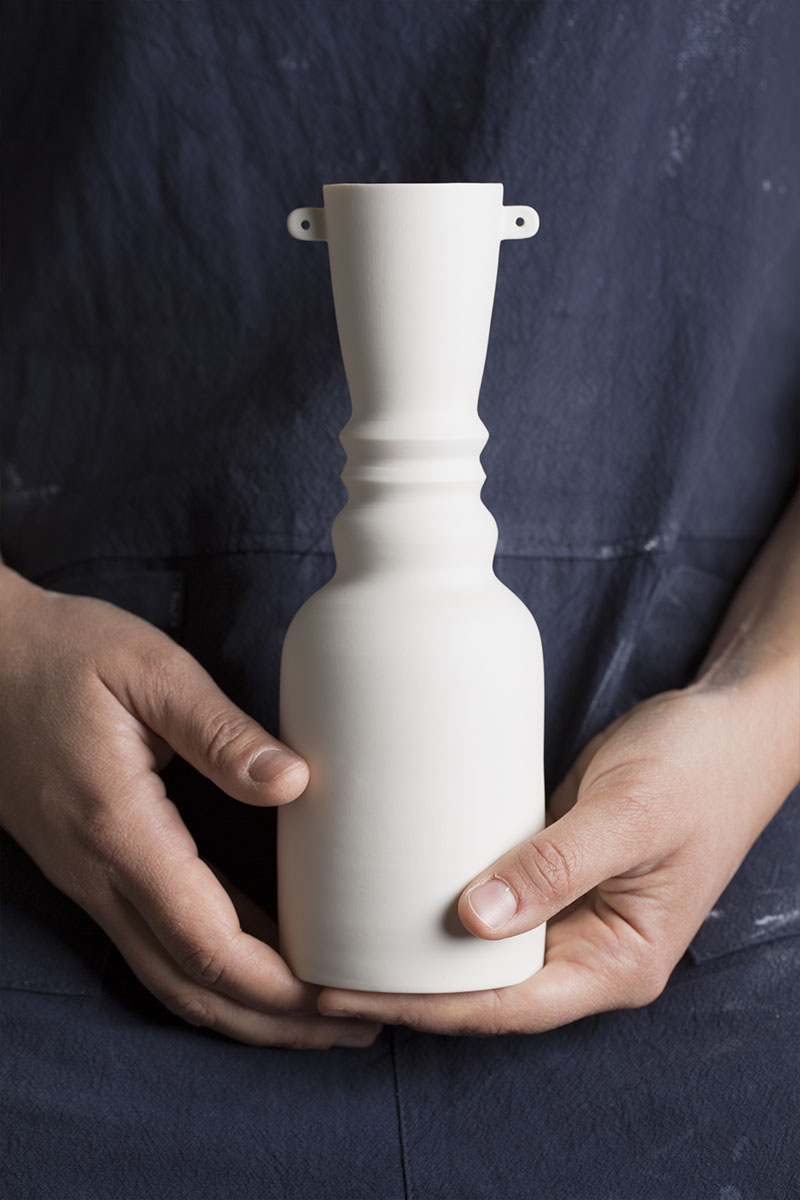
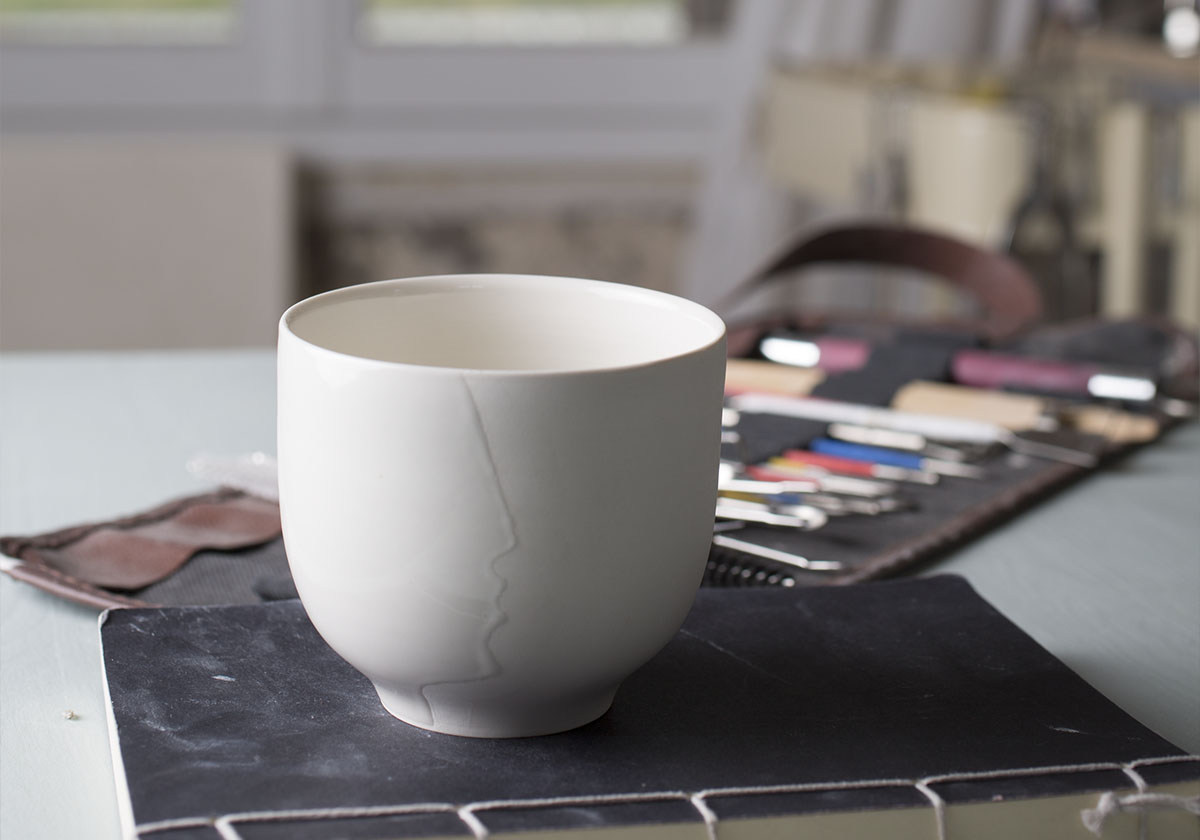
Drawing is very important in your work. But do you leave room for improvisation?
Unfortunately not. It’s something I’d like to know how to do, to be more spontaneous. But the preliminary work and the drawing are stages that I don’t know how to do without yet. I need to collect words, images, then make sketches and study the proportions before I start. By the time I get to the realization, the piece is already well done, I just have to test its volumes.
Manual creation is often a solitary exercise that allows you to refocus on the essential. But would you like to be surrounded by others to create? Have you collaborated with other designers?
I like being alone in the studio. It wasn’t always the case. It took me a while to get used to it because I liked sharing my work space. Beyond the practical aspect, it’s also another energy. We can exchange ideas, give each other advice, simply chat. Now that I’m on my own, collaborations are starting to happen. There is a project with the ceramist Emmanuelle Roule which is still dormant but which I hope will soon see the light of day. There is also a collaboration with Pia Van Peteghem which will be exhibited during the Journées de la Céramique in the Saint Sulpice district in Paris (27 to 30 June 2019).
What will be the theme of your next collection?
I have a lot of desires and projects that are waiting to see the light of day, some of them for a long time. It’s important for me to take the time. I have notebooks and inspiration boards that are starting to multiply. I let the ideas mature. This allows me to sort out the ideas because there are many, but they are not always good! In the short term, I would like to develop the Intervalle collection, which is close to my heart, made up of strong and singular pieces that are a little bit outside the world of tableware, notably with a lamp. I would also like to explore bare earth more. To be continued…
Any favourite addresses in Paris?
The Guimet Museum: it’s a superb source of inspiration and the modernity of some of the pieces, even though they are centuries old, is really surprising. The Ateliers de la Manufacture de Sèvres is also worth a visit if you like ceramics and workshops. Otherwise, I love the Yvon Lambert bookshop, rue des Filles du Calvaire, and the À Rebours shop for its sharp selection. I haven’t wandered around Paris for a long time, and it makes me want to.
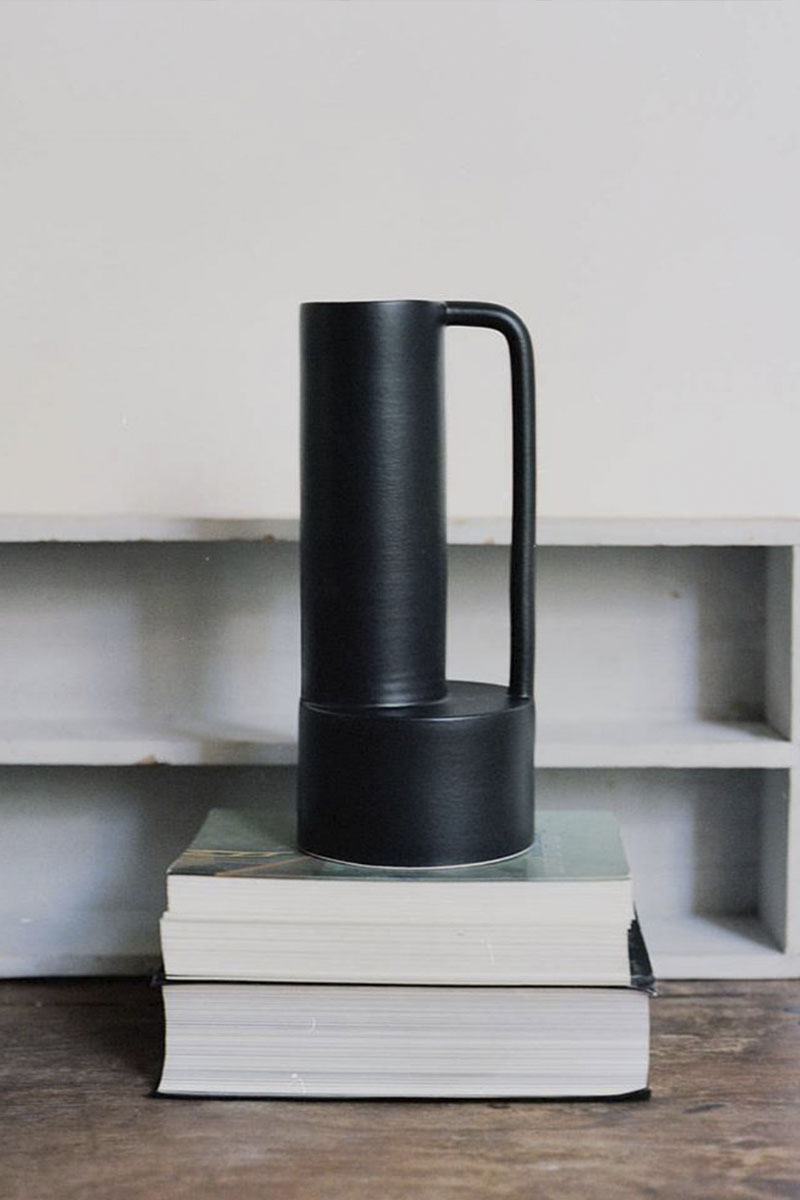
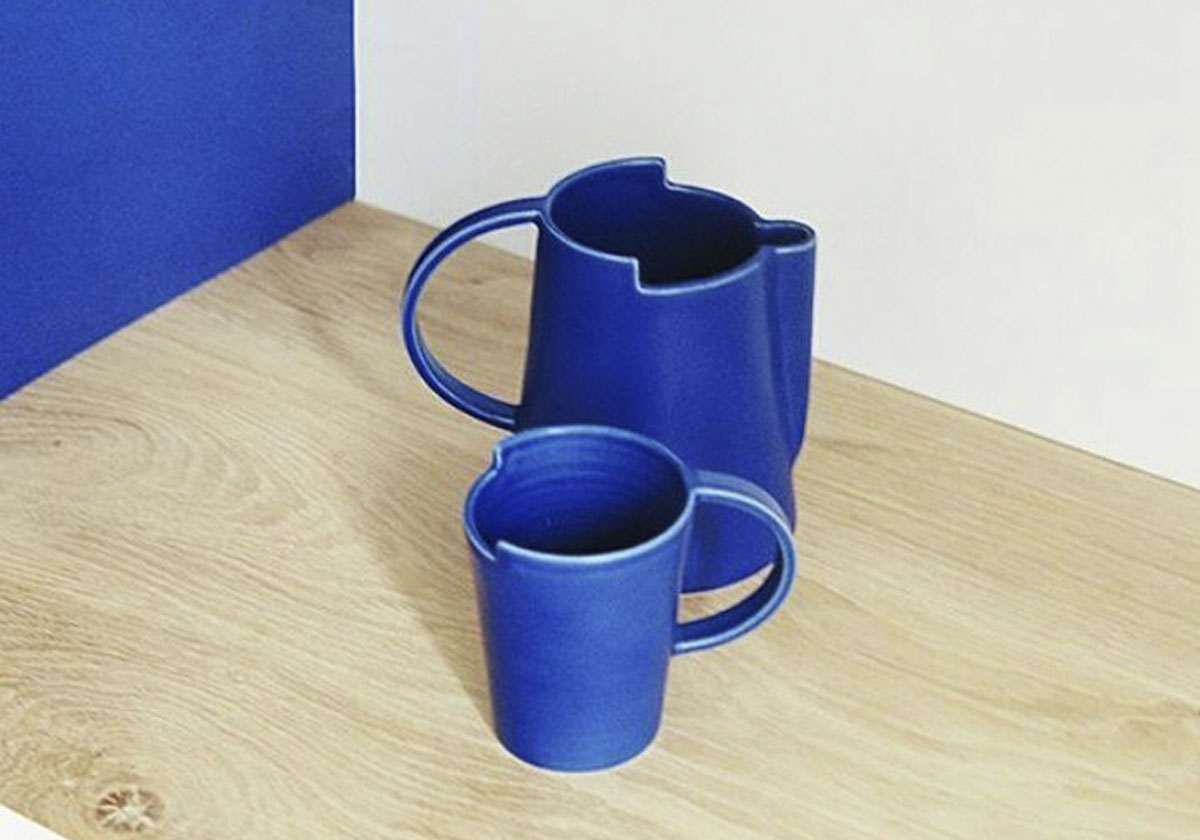
PRATICAL INFORMATION
Credits ©2020 Text – Emmanuelle Oddo
Photos – Gaëtane Girard & Tiphaine Caro
Article from the Revue n°l selon ARCHIK

